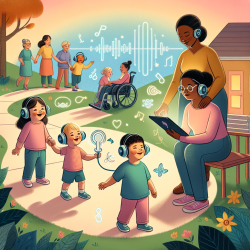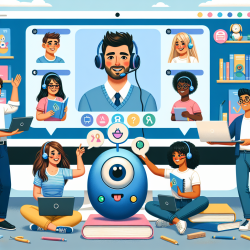Introduction
As a passionate advocate for children's health and well-being, I am committed to leveraging data-driven insights to drive meaningful change. In the realm of speech-language pathology, addressing the needs of children with hearing loss is paramount. The research article, Reframing Our Health Care System for Patients With Hearing Loss, provides critical insights into how we can enhance care for individuals with hearing loss, including children. This blog aims to distill these insights into actionable steps for practitioners, ensuring that every child receives the quality care they deserve.
Understanding the Challenges
Hearing loss affects nearly 20% of Americans, yet our health care system often falls short in providing effective care for these individuals. For children, this can lead to communication breakdowns, reduced access to health information, and decreased satisfaction with care. These challenges can exacerbate health inequities and increase health care costs. The research highlights the urgent need to reframe our health care system to better serve patients with hearing loss, using existing models of best practices and accessibility.
Strategies for Improvement
The research identifies several strategies to improve care for individuals with hearing loss, which can be adapted to enhance outcomes for children:
- Screening and Identification: Implement routine hearing screenings in schools and pediatric clinics to identify children with hearing loss early. This proactive approach can facilitate timely interventions and accommodations.
- Universal Design and Inclusion: Adopt principles of universal design in educational materials and health care settings. Ensure that communication aids and assistive technologies are readily available and accessible to children with hearing loss.
- Effective Communication Approaches: Train educators and health care providers in effective communication strategies tailored to children with hearing loss. This includes using visual aids, sign language, and other tools to enhance understanding.
- Leveraging Technology: Utilize technology to support communication and learning for children with hearing loss. Online therapy platforms, like those offered by TinyEYE, can provide accessible and effective speech-language therapy services.
- Social Support and Resources: Encourage families to connect with organizations dedicated to hearing loss advocacy and support. These resources can provide valuable information and community connections.
Encouraging Further Research
While the strategies outlined in the research offer a solid foundation, continuous research is essential to refine and expand these approaches. Practitioners are encouraged to engage in ongoing research and professional development to stay informed about the latest advancements in hearing loss care. Collaboration with researchers and participation in studies can contribute to a deeper understanding of effective interventions and support systems for children with hearing loss.
Conclusion
By implementing the strategies outlined in the research, we can make significant strides toward a more equitable and accessible health care system for children with hearing loss. As practitioners, our commitment to data-driven decision-making and continuous improvement will ensure that every child has the opportunity to thrive. Together, we can create a brighter future for children with hearing loss, empowering them to reach their full potential.
To read the original research paper, please follow this link: Reframing Our Health Care System for Patients With Hearing Loss.










